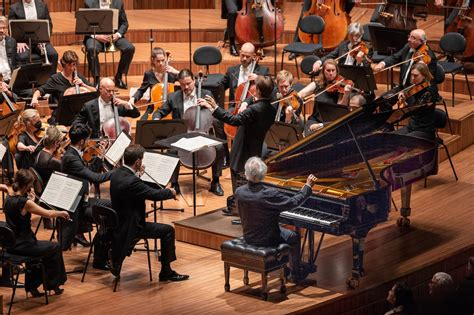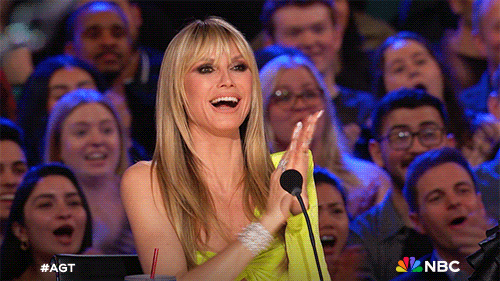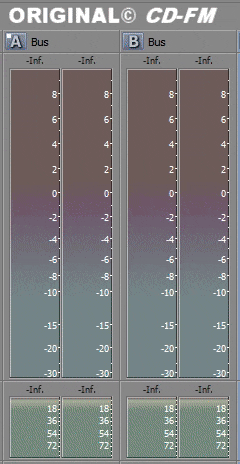All Activity
- Today
-
You CAN do it....... 1 step at a time Imagine yourself playing this on the Grand-Piano, in a Massive Concert Hall Center stage with the Orchestra all Around you...........They would gently play softly, ACCORDINGLY to the notes you played. It may take time..........But you have the power to create.
-

Learning from Brahms.
Luis Hernández replied to Luis Hernández's topic in Piano Music, Solo Keyboard
@FILMSCORE I don't know... When I've tried to orchestrate something I've done for the piano..., I almost never get to the end. I prefer, if it's for orchestra, to do it thinking about it from the beginning. But well, it can be a challenge... -
You could take this one step further, by orchestrating strings,and soft-horns,and cello bass, BEHIND the Piano solo.............. to create a Beautifull Ensemble.
-

Learning from Brahms.
Luis Hernández replied to Luis Hernández's topic in Piano Music, Solo Keyboard
@FILMSCORE Ah yes. Although everything is generated with a virtual instrument, I try to take care as much as I can of the dynamics, rubato, etc... Thank you. -
Well yes ofcourse.........But it was all created by YOU, including the song too It wasn't a Re-Creation .......its an ORIGINAL.
-
FILMSCORE changed their profile photo
-

Learning from Brahms.
Luis Hernández replied to Luis Hernández's topic in Piano Music, Solo Keyboard
Thanks, but it's not human execution, it's all with software. -
-
Hello, how are you? I hope you are well in this Easter period (wherever it is celebrated). In my country there are many holidays, so a little time to do things. Back to the music... After delving a few months into the compositional resources of Chopin, I have decided to go into a composer that I find more difficult, to see if I learn something: Brahms. Attending only to solo piano music, I have read, analyzed, and above all listened to, many pieces. I have tried to write something, much simpler, incorporating some of its characteristics as for example: -Melodies mainly by continuous degrees. -Several melodic planes (with internal melodies). -All conglomerated in counterpoint as a base. -Wide arpeggios -Harmonization in thirds / sixths. -Polyrhythm and use of hemiola. -Harmonic sequences based on conduction of voices (measures 11 - 16). -Omnibus progression (measures 25 - 29). Etc. I do not try to imitate Brahms, it would be impossible for me to reach 10% of his level. Only to include his resources in the music.
-

are these appropriate for children?
Luis Hernández replied to Mooravioli's topic in Piano Music, Solo Keyboard
Hello All three pieces are very good and beautiful. What I have no idea is if they are suitable for children? I guess it will depend on the age and level. There are big chords and a lot of chromaticism. I also think the expressive level required is quite high. -
Ferrum started following Image in G major
-
Oooh I like that pedal tone on bar 9 onwards with neopolitan chords above it, heck I think this whole piece has this really nice neopolitan feel to it. Y'know, the 1st theme and the 2nd theme being G and A-flat. And I love that really recycled romantic theme from bar 35 onwards (legit gave me feelings fr). It really does contrast well with the impressionistic and lush bars before it. Not to mention the freaking modulation in bar 33 and 34 from G to A-flat. I like to interpret the quartal E-flat as to mark the impressionistic part and the sliding to E flat dominant 7, which resolves in A-flat, suggesting a traditional V-I, as to mark a more romantic approach on the proceeding bars. I like the high register counter point on bar 55 to 58 too. A nice variation to contrast the previous bars. Additionally, I like that you reference the beginning part at end the piece and then just hangs the final chord on a dominant 7 with the tonic bass to really punch in the end. Overall, this piece feels really broad and wide, and I love ittt. Thanks for sharing!!!
-
chopin started following Image in G major
-
A lot of juicy abrupt key changing here! And like @Luis Hernández said, this definitely reminds me of Debussy. And too bad you couldn't get this out when I did a short video on arpeggiated chords 🤪. But beautifully notated and great performance btw! Also, I didn't realize the pentatonic scale could be so beautiful and romantic. I suppose it has to do with how it's used.
-
Hello Great music! The impressionistic mood is very well noted. Some things lead to Debussy like setting a Tonic with pedal on low notes or the “la cathédrale engloutie” style chords. But also those continuous arpeggios remind me of some of Henry Cowell's techniques (although he did it inside the piano). It's a harp-like effect. The fourth harmonies here sometimes lead to unexpected harmonic cadences and I quite like that.
-
Henry Ng Tsz Kiu started following To The Stars | 2025 Revision Progress and Image in G major
-
The Image in G major is the third piece of the four piano pieces I wrote for relaxation after writing the very heavy String Sextet. I try to do something a bit different than the previous two pieces, as I actively use more quartal chords and pentatonics in the whole piece, and also invite a bit of impressionistic chords. This is my personal favourite of the set. Here is the score and YT video: (Final) Image in G major.pdf Like the previous pieces, this one also comes from recycled materials. It comes from an unfinished Piano Suite I composed in 2016 Jan, but only with fragments of it including the first few bars, b.35-38 LH melody and some parts of b.58-72. Don’t know why I went for pentatonics that long ago LoL! One thing to note: b.43-46 is probably inspired by @Fugax Contrapunctus Pabio’s mention of Joe Hisaishi in his review of my Sextet, plus my recent listening experience of his music while watching Miyazaki’s films. Hope you enjoy this small piece! Henry
-

chamber To The Stars | 2025 Revision Progress
Ferrum replied to Ferrum's topic in Incomplete Works; Writer's Block and Suggestions
-
This software is used for Radio-Broadcasts, where High & Low levels are more Even, with less "Drop-Out" It seems to be the standard these days, regardless of the original composers intention. https://bswusa.com/orban-optimod-5950-hd2/ A Visual Representation comparison.
-

Symphonic Overture
Henry Ng Tsz Kiu replied to Thatguy v2.0's topic in Orchestral and Large Ensemble
For a Filmscore guy like him he would just know how to maximise everything in the stupidest way and think he's the best so it's a normal level of artistry for him 🤭 -
Nah not at all. Just make sure to credit the composer if you use someone's music for your own purposes. I noticed that your alterations maxed out the volume no matter what the dynamic levels were supposed to be. Maybe try just making the loud parts louder, but have the wisdom to give subtlety where it's needed.
- Yesterday
-

are these appropriate for children?
Mooravioli replied to Mooravioli's topic in Piano Music, Solo Keyboard
Hello Peter, Thank you for your quick reply to this. I do think your point is very valid, in that the child may need time to really absorb the harmonies and rhythms; I've also included a few unorthodox hand crossings which makes the technique trickier. Now that I think of it, the capybara piece would probably be a mid to late intermediate piece. As for the tempo, I just thought there should be a very subtle and gradual ritardando into the B section(measure 71) starting from measure 57. Perhaps, if I recorded my own piece, the quirky tempo change would be more clear. I'll try to work on learning it myself. very happy you enjoyed the capybara piece, though. It definitely took a while to conceive and the whole piece pretty much grew out of the idea at measure 101 - 104. I am also quite glad I am finding my own style with the piece, though perhaps the blend of styles could be a bit smoother in my subsequent numbers. -
Alant started following Unfinished C major project
-
Any and all feedback (for example if the high arpeggio notes are too repetitive) and advice is appreciated. I like the piece but can’t really think of any new ideas for it
-
Thanks for listening and sharing! Yeah, I struggled with the form quite a bit. It's my first time ever writing a piece this long. I had sketched out all of those different ideas based on the opening motive, so then "the material dictates the form" Yes the piece is definitely tonal, but the note selection is a bit more modern. There is no tertiary harmony at all, for instance, except maybe incidental passing notes. I would describe it as "neotonal". I like tonality enough and will likely always write in that style.
-
(1).thumb.jpg.1336d093d112555a132162dfc44a4d71.jpg)
Just composed this baroque quartet, what do you guys think?
Elad_Hevron replied to Elad_Hevron's topic in Chamber Music
uploaded a new version with score! check it out 🙂- 5 replies
-
- composer
- baroque style
-
(and 1 more)
Tagged with:
-
(1).thumb.jpg.1336d093d112555a132162dfc44a4d71.jpg)
Just composed this baroque quartet, what do you guys think?
Elad_Hevron replied to Elad_Hevron's topic in Chamber Music
uploaded a new version with score! check it out 🙂- 5 replies
-
- composer
- baroque style
-
(and 1 more)
Tagged with:
-
(1).thumb.jpg.1336d093d112555a132162dfc44a4d71.jpg)
Just composed this baroque quartet, what do you guys think?
Elad_Hevron replied to Elad_Hevron's topic in Chamber Music
i uploaded a new version with score! check it out 🙂- 5 replies
-
- composer
- baroque style
-
(and 1 more)
Tagged with:
-
It's been a while since I've done work in progress stuff. So, in order to stay motivated, I'm gonna post some progress on this revision. I've been in the mood for doing revision of my older pieces, and I wanna rework them with my current knowledge of composition. I've mentioned before that I've been doing some rework on the Alula Variations but I'd probably put it in indefinite pause. With that said, I really love the themes in this but I felt like I could do better with the current version. I've thickened up the accompaniment, added and varied the articulations on both instruments, experimented with dynamics, added a bunch of ornaments, neighbor notes, passing notes, counter point, you name it, added more variety to the harmony, and tinkered with the registral characteristics of the clarinet and used them to my advantages. I especially liked the quasi dance-like rhythm on the current version so I've made the rhythm clearer and more pronounced on that section. I've rewritten the cadenza so it actually contains previous materials and not just some random arpeggios. Although, I've not inputted in the notes on the score yet. You could listen to it on the audio, however. Anyways, feedbacks are always appreciated, tysm. Here's the old version for comparison.










